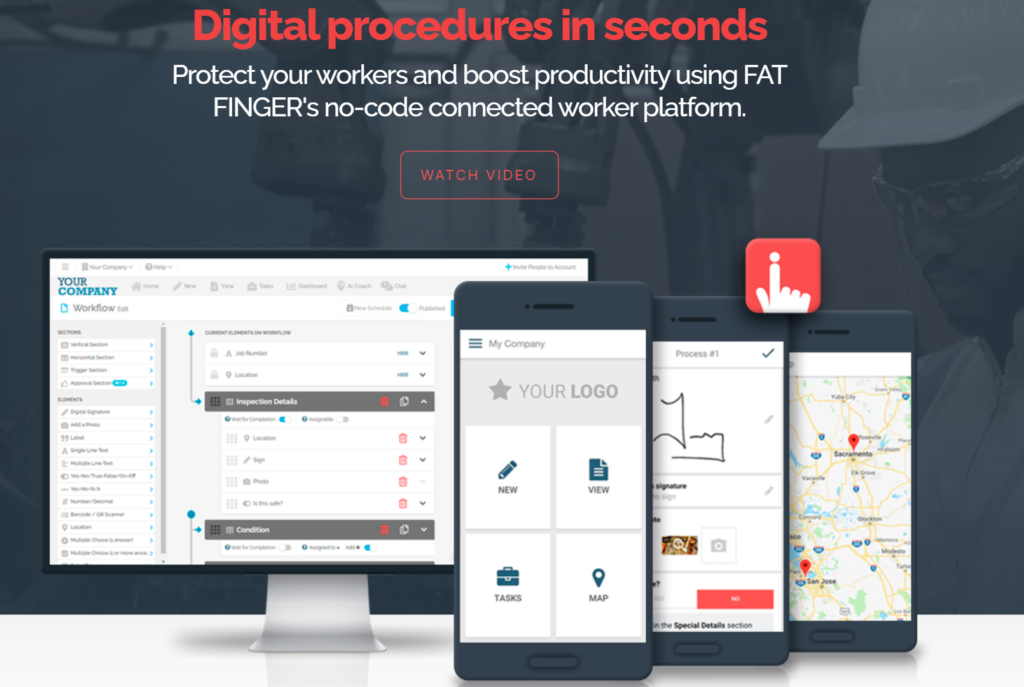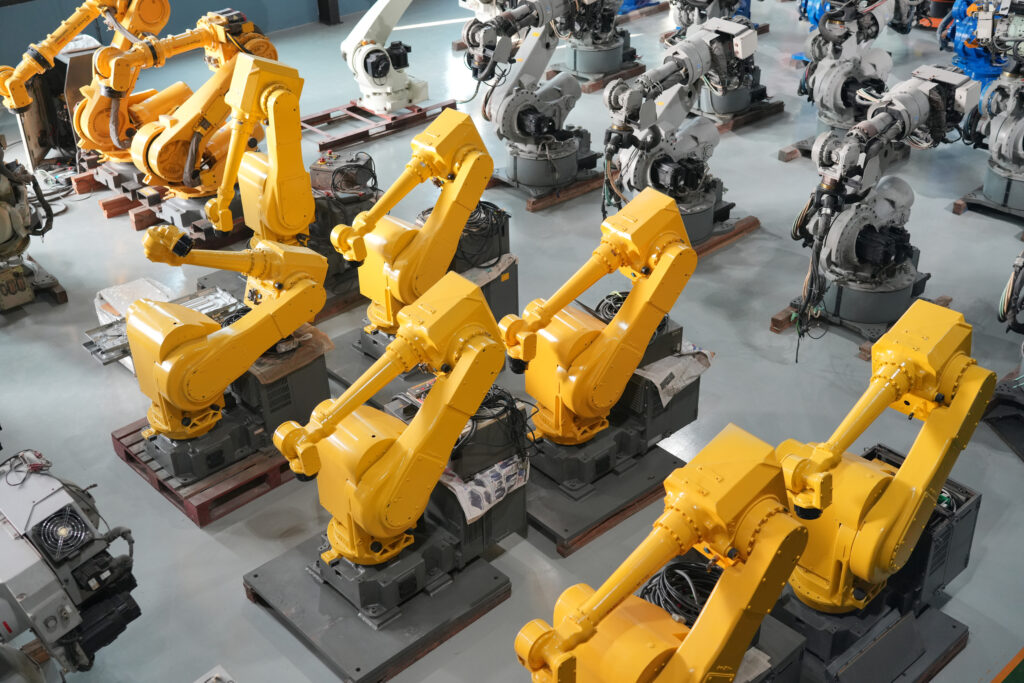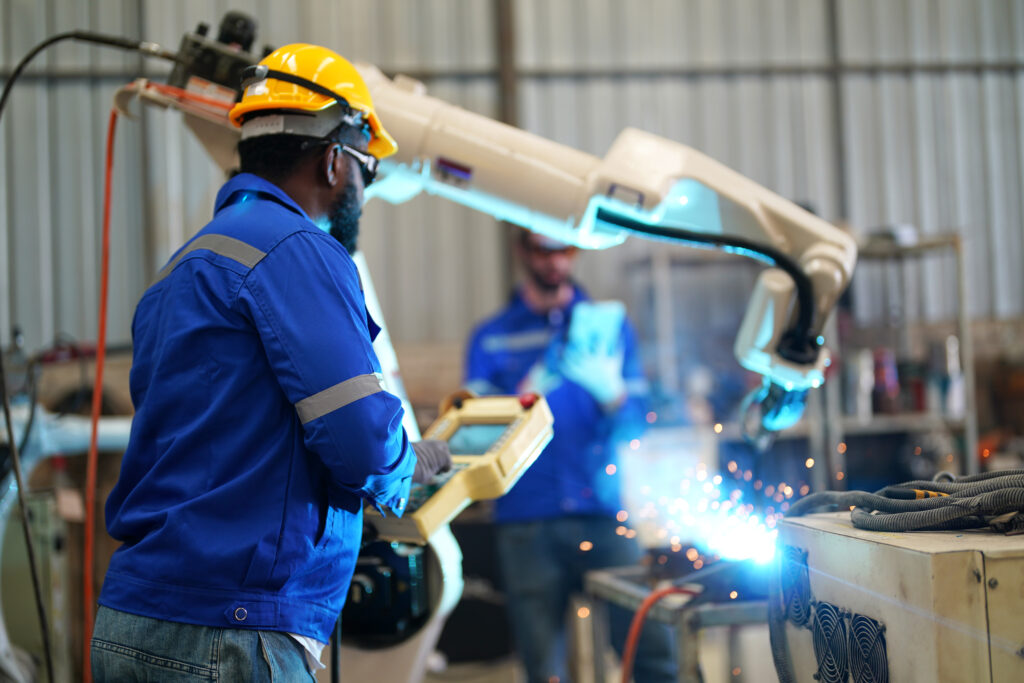As we navigate the digital age, the Future of work is being redefined by innovative technologies. One such technology that is making waves in the industrial sector is the Connected Worker Technology. This technology, powered by platforms like FAT FINGER, is revolutionizing the way industrial jobs are performed, enhancing productivity, safety, and efficiency.
The Role of FAT FINGER in Connected Worker Technologies

FAT FINGER is a leading digital workflow procedure builder that is at the forefront of this technological revolution. It allows organizations to build checklists, workflows, and digital procedures that unlock operational excellence. With its drag & drop workflow builder, FAT FINGER simplifies the creation of digital workflows and checklists across safety, maintenance, and operations areas.
- Safety: Take 5 Safety, Near miss reporting, JSA / JHA, Risk Assessment, Incident reporting, Journey report
- Operations: Material Inspection, Quality Control, Shift Handover, Facility inspection / Production rounds, Line Changeover, Field ticket
- Maintenance: Work Order Checklist, Truck inspection checks, Mobile Asset Inspection, Shutdown / Turnaround form, Preventive maintenance inspection, Predictive Maintenance
How Connected Worker Technologies are Reshaping Industrial Jobs

Connected worker technologies are transforming industrial jobs in several ways:
- Enhanced Safety: With features like Take 5 Safety and Incident reporting, workers can identify and report safety hazards in real-time, reducing the risk of accidents.
- Improved Efficiency: Tools like Quality Control and Shift Handover streamline operations, reducing downtime and improving productivity.
- Optimized Maintenance: With features like Predictive Maintenance and Work Order Checklist, organizations can proactively manage their assets, reducing the likelihood of unexpected breakdowns.
Case Study: The Impact of FAT FINGER on Industrial Jobs
One of the best ways to understand the impact of connected worker technologies is through real-world examples. A leading manufacturing company implemented FAT FINGER’s digital workflow solutions and experienced a significant improvement in their operations. The company reported a 30% increase in productivity, a 20% reduction in downtime, and a 15% decrease in safety incidents.
The Future of Industrial Jobs with Connected Worker Technologies

Connected worker technologies are a game-changing innovation in the industrial sector, with immense potential to revolutionize the way industrial jobs are performed. Wearable devices, augmented reality, artificial intelligence, and IoT are just a few examples of these technologies. They enable real-time monitoring, remote collaboration, predictive analytics, and machine learning.
As more organizations realize the benefits and implement these technologies, we are likely to see:
- Safer work environments, and reduced downtime and associated costs
- Overall improvement in efficiency in industrial jobs by eliminating manual data entry, reducing errors, and increasing the speed of operations. For instance, wearable devices can provide workers with hands-free access to information, allowing them to complete tasks more quickly and accurately.
- Predictive analytics can help in identifying bottlenecks and inefficiencies, enabling proactive measures to optimize processes.
- By automating repetitive tasks, workers can focus on more critical and complex tasks. This will increase overall productivity, enhance the quality of work, allow real-time communication and collaboration.
Perhaps the most exciting aspect of connected worker technologies is their continuous advancement. With the rapid pace of technological innovation, we can expect these technologies to become more sophisticated and powerful. This means that the possibilities for enhancing safety, efficiency, and productivity in industrial jobs are endless. From virtual reality training to AI-powered decision-making tools, the future holds immense potential.
As more organizations embrace these technologies, we can look forward to a safer, more efficient, and more productive industrial sector. And with the continuous advancement of these technologies, the potential for improvement is limitless.
Conclusion
Connected worker technologies, powered by platforms like FAT FINGER, are reshaping the future of industrial jobs. By enhancing safety, improving efficiency, and optimizing maintenance, these technologies are revolutionizing the way industrial jobs are performed. As we move forward, these technologies will continue to play a crucial role in the industrial sector, driving operational excellence and paving the way for a safer, more efficient future.
Ready to experience the power of connected worker technologies? Sign up for FAT FINGER or request a demo today and unlock the potential of your front-line teams.


